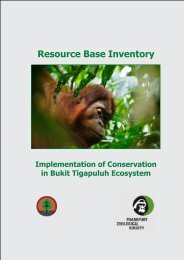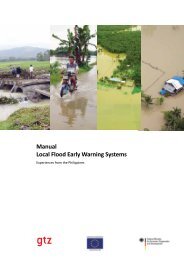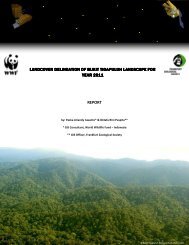The Eastern Himalayas New Species Discoveries
The Eastern Himalayas New Species Discoveries
The Eastern Himalayas New Species Discoveries
You also want an ePaper? Increase the reach of your titles
YUMPU automatically turns print PDFs into web optimized ePapers that Google loves.
For centuries, the <strong>Himalayas</strong> have determined climate, history, economy , and biodiversity providing livelihoods to millions of people both directly and<br />
indirectly. It is without doubt the bastion of livelihood sources putting smiles on the faces of millions of people who are lucky to be dwelling either within<br />
or beyond the <strong>Himalayas</strong>. It is therefore befitting that a large number of new species are being discovered in the <strong>Himalayas</strong>. <strong>The</strong> discovery of two new<br />
mammals among over 350 new species is indeed a pointer towards the <strong>Himalayas</strong> being one of the planets ‘ rich reservoir of biodiversity.<br />
<strong>The</strong> <strong>Himalayas</strong> provide forest cover, feed our perennial rivers – that are the source of drinking water, irrigation, and hydropower- conserves biodiversity,<br />
provides a rich base for high value agriculture, and spectacular landscapes for sustainable tourism. Clearly, the Himalayan ecosystem is vital to the<br />
ecological security of not only Bhutan, but also South Asia.<br />
It is sad to note that climate change is adversely impacting the Himalayan ecosystem through increased temperature, altered precipitation patterns, receding<br />
glaciers, threat from GLOFs and episodes of drought and we must expedite interventions to contain these adverse impacts and prevent our populace falling<br />
victims to the wrath of nature.<br />
Continued and enhanced monitoring of the Himalayan ecosystem, particularly its glaciers and glacial lakes is necessary to equip ourselves with tools to<br />
adapt to the impacts of Climate Change. Since several other countries in the South Asian region share the Himalayan ecosystem, appropriate forms of<br />
scientific collaboration and exchange of information is needed. We need to come together to conserve this shared natural heritage - the <strong>Himalayas</strong>.<br />
I express support for WWF and its efforts for conservation of biodiversity and natural resources and helping the planet to continue enjoying the bounties of<br />
the Living <strong>Himalayas</strong>.<br />
PHONE No: 322482, 322129 (0) FAX: (975-2) - 323153<br />
POST BOX NO. 252

















